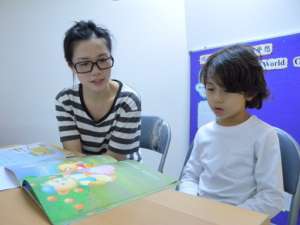
 Jun 25 2022
Jun 25 2022
Can English leveled reading be applied to Chinese language directly? First let’s think back to when we were children: how did we learn to read English? When we were babies, we were talking and communicated long before we knew that “A” stood for apple and “B” for Beijing.
The following journey is what each child may go through.
A for apple; B for banana; C for cat; D for dog; E for egg; F for father; G for Giraffe…
Then, A B C D E F G … X Y Z, a b c d e f g .. x y z
And then, bus but bat; hit hot hat…Apple, Pineapple; Cat, Caterpillar…
Then seamlessly led to sight words, tense, and grammar along with leveled readers, from big picture books, such as “I have a cat. The cat has a big mouth. His big mouth can eat many mice.”
Kids progressively are introduced to reading Ladder books, Bridge books, and Chapter books.
The leveled English reading acquisition approach is so successful that many people believe English is the easiest language to learn in the world. Even though learners have to learn to spell, memorize and sort out its complex grammar rules, like tense, singular/plural…and to deal with the words increasing the quantity endless.
Believe the English leveled reading is a successful approach that is worth to be learned. At present in the market of Chinese teaching and learning, we can see some Chinese trade books or online readers published which have claimed their books are aligned to the English levels such as the ACTFL language framework. However, referring to our in-classroom experience of 30+ years, simply applying the English leveling system to level Chinese reader is absolutely a huge misconception about Chinese reading acquisition.
Myth: Does English leveled reading programs can be applied Chinese Language directly just because it is successful for English language?
Using the same approach when applied to written Chinese, the following samples could show us it totally does not make sense for children to acquire written Chinese in the same way.
The reason is due to the forms of Chinese language consisting of written and speaking in totally different ways. The two forms of difficulties in children’s language natural acquisition are matching children’s learning abilities physical and mental at different standards.
Let us take a look the following examples
píng guǒ 苹果
xiāng jiāo 香蕉
bōluó 菠萝māo 猫
gǒu 狗
jīdàn 鸡蛋
bàba 爸爸
chángjǐnglù 长颈鹿
biānfú 蝙蝠
màozi 帽子
máomaochóng 毛毛虫
gōnggòngqìchē 公共汽车
dǎ 打
rè 热
dànshì 但是
wǒ yǒu yì zhī māo。māo de zuǐ ba dà。tā de dà zuǐ ba ké yǐ chī hěn duō xiǎo láo shǔ。
我 有 一只 猫 。 猫 的嘴 巴大。 他 的大嘴 巴可以吃 很 多 小老 鼠 。
We can see from the random examples above listed, that for children naturally language acquisition the difficulty for oral Chinese (Pinyin sound and pronounced like English naming), and written Chinese Characters in actuation are not at the same level. It means for Chinese leveled reading we cannot apply English leveled reading program directly. We have to find our own way to produce Chinese leveled reading programs properly for young learners.
For the next, we will release our solution for Chinese leveled reading. Please stay tuned for further updates.